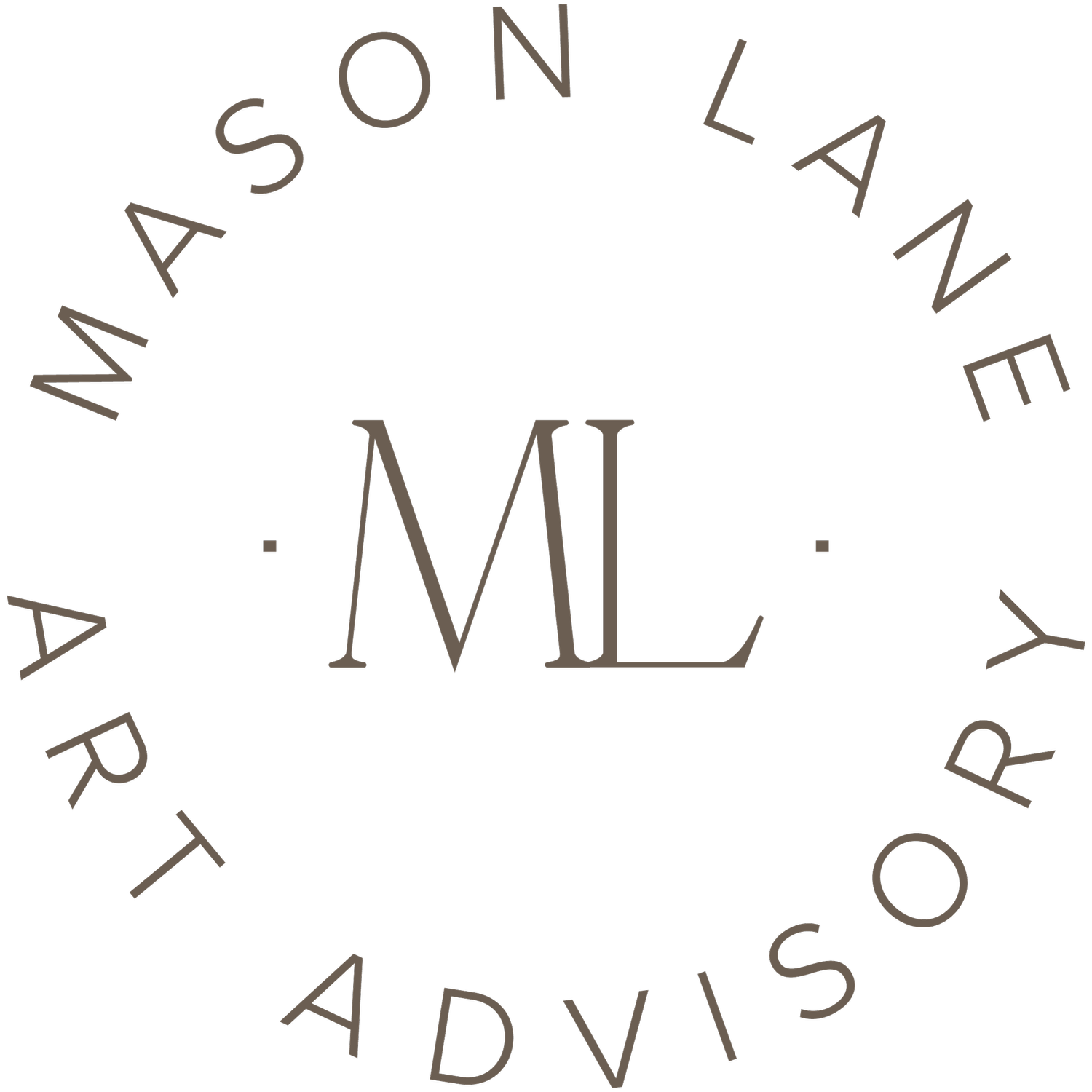Artist Price Increases
Artist price increases are common, but they are not necessarily correlated with an artist’s success, or increased demand for that artist’s work. In some cases, they do signal the strength of an artist’s market, and in others, they are a red flag. Here, we’re getting specific about four price change scenarios, sharing what we’ve seen and what we think. Sharing this information aligns with our transparent approach to helping clients navigate the art market. We hope this information is valuable to you as an art appreciator or collector.
Pricing scenario 1: Pricing for works by Jessie Edelman, Brooklyn painter represented by Andrew Rafacz Gallery, has increased gradually in recent years in a way that seems completely aligned with the quality of her work, exhibitions, and gallery representation. The price increases have happened incrementally by 10-20%, and align with a big show or important acquisition. Jessie’s work also stands out as being a beautifully executed, modern take on Impressionistic landscape painting. She is inspired by the female figure, often painting women in Mediterranean-looking environments, looking out into a vista lush with colorful brushwork, depth, and a sense of escapism.
Pricing scenario 2: Pricing for works by Amanda Means, late-career photographer, have increased a huge amount in recent years – 200-400%, prompted by auction sales, exhibitions, and museum acquisitions. The size of this price increase is not typical, but it lines up with the artist’s supply and demand. Much of her most desirable work is done on old Polaroids and vintage photo paper, neither of which exist anymore. Her use of this and experimental techniques from the past 3 decades have been noteworthy in the canon of American photography. Pricing at auction therefore skyrocketed and was later supported by important acquisitions and shows. Mean’s work has also been collected and shown by major institutions, including Museum of Fine Arts, Boston; Lost Angeles County Museum of Art, Los Angeles, and the National Museum of Photography, Film and Television in Bradford, England.
Pricing scenario 3: Pricing for works by a painter whose work we love, but whose name we will not mention, have jumped 250% in 2 years when the artist’s gallery representation changed. The artist’s previous gallery was in Toronto, and the new one is in NYC, with an international reputation. During this jump, the artist’s exhibition history and credentials didn’t change significantly, and artists with comparable CVs are priced much lower, making the large price increase seem unjustified, in our opinion. This is a tricky scenario because once pricing jumps, the artist’s market feels unstable. Lowering the pricing is not a good look for those who did buy at the higher number, but keeping it high may discourage buyers and lower demand.
Pricing scenario 4: Pricing for works by photographer Adam Magyar have stayed stagnant in recent years, despite two works being recently acquired by the Metropolitan Museum of Art. We would expect his pricing to increase soon for this reason, which means now is a great time bo buy his work. Also, it’s a good sign that Magyar’s gallery, the Stephen Bulgar Gallery in Toronto, does not hike prices after an important acquisition. Alternatively, they seem committed to continuing to expose the work in ways that elevate the artist’s profile, building his market slowly and sustainably.
Pricing scenario 5: Pricing for a contemporary abstract artist are $10,000 at one gallery, and $20,000 at another gallery. This is something we do not hesitate to bring up with gallerists because it’s not a good look, and they are generally horrified to learn about such a discrepency. It reflects poorly on both the galleries and the artist. Figuring out artist pricing is a basic step in the artist/gallery relationship, and when that pricing is all over the map, meaning works by the same artist, of the same size, media and time period, are priced differently, it looks sloppy. Accordingly, we speak up and steer clear from recommending these works to our clients.
Clearly there are countless examples of artists who fall into and out of the scenarios shared here, but we hope these specific situations provide valuable insight into how we think about the price changes we track. We’re always transparent about every element of the art world, including pricing, value, appreciation and quality, and are happy to answer questions on the topic.

